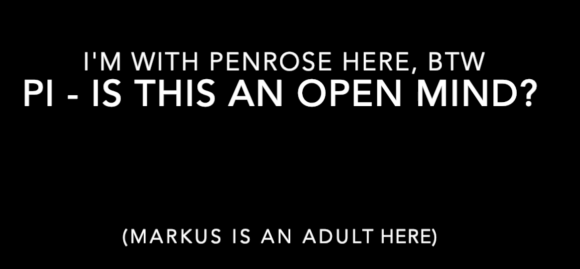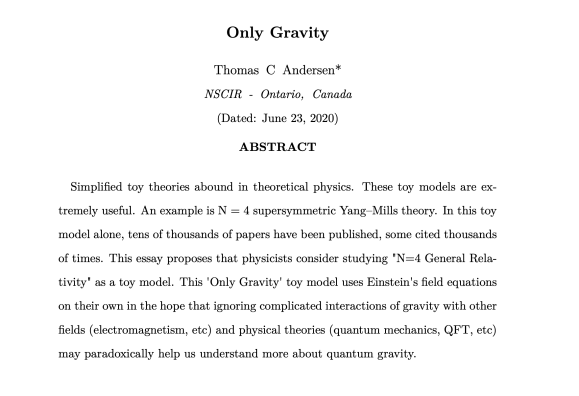T C Andersen 2019 J. Phys.: Conf. Ser. 1275 012038 – 9th International Workshop DICE2018 : Spacetime – Matter – Quantum Mechanics
Abstract. The recent experimental proposals by Bose et al. and Marletto et al. (BMV) outline a way to test for the quantum nature of gravity by measuring gravitationally induced differential phase accumulation over the superposed paths of two ∼ 10−14kg masses. These authors outline the expected outcome of these experiments for semi-classical, quantum gravity and collapse models. It is found that both semi-classical and collapse models predict a lack of entanglement in the experimental results. This work predicts the outcome of the BMV experiment in Bohmian trajectory gravity – where classical gravity is assumed to couple to the particle configuration in each Bohmian path, as opposed to semi-classical gravity where gravity couples to the expectation value of the wave function, or of quantized gravity, where the gravitational field is itself in a quantum superposition. In the case of the BMV experiment, Bohmian trajectory gravity predicts that there will be quantum entanglement. This is surprising as the gravitational field is treated classically. A discussion of how Bohmian trajectory gravity can induce quantum entanglement for a non superposed gravitational field is put forward.
This paper is a result of a talk I gave at DICE2018. The trip and the talk allowed me to sharpen the math and the arguments in this paper. I’m convinced that the results of a BMV like experiment would show these results – namely that gravity violates QM! Most physicists are of course on the opposite side of this and would assume that QM would win in a BMV experiment.
For those of the main camp, this paper is still important, as it describes another way to approximate quantum gravity – one that works better than the very often used Rosenfeld style semi-classical gravity. Sitting through talks where researchers use the semi-classical approximation in order to do sophisticated quantum gravity phenomenology has convinced me that often the results would change significantly if they had of used a Bohmian trajectory approach instead. The chemists figured this out a while ago – a Bohmian approximation is much more accurate than semi-classical approximations.
In some sense semi-classical gravity seems more complicated than Bohmian trajectory gravity, as in semi-classical gravity the gravitational field has to somehow integrate the entire position space of the wave function (a non local entity) in real time (via the Schr ̈odinger – Newton equation), in order to continuously use the expectation value as a source for the gravitational field. In Bohmian mechanics, the gravitational field connects directly to an existing ’hidden’ particle position, which is conceptually simpler.











 Andersen, T. C. on ORCID
Andersen, T. C. on ORCID



